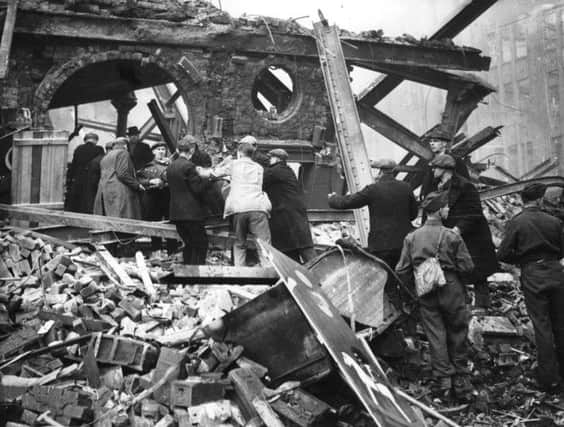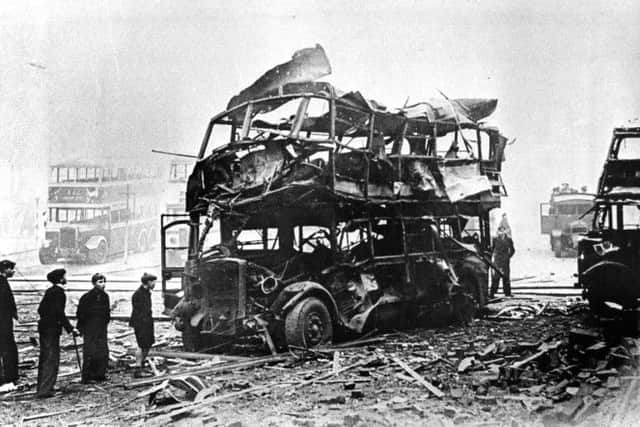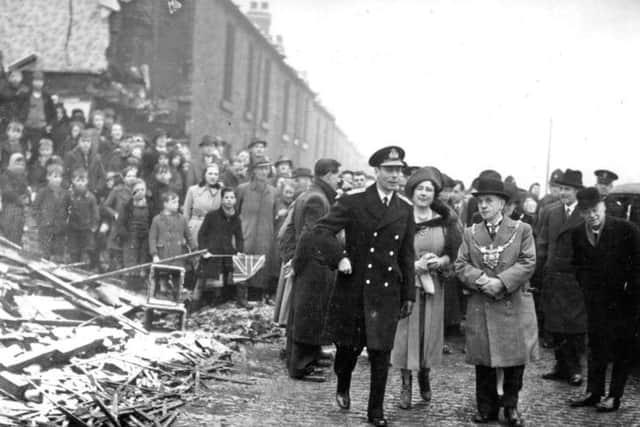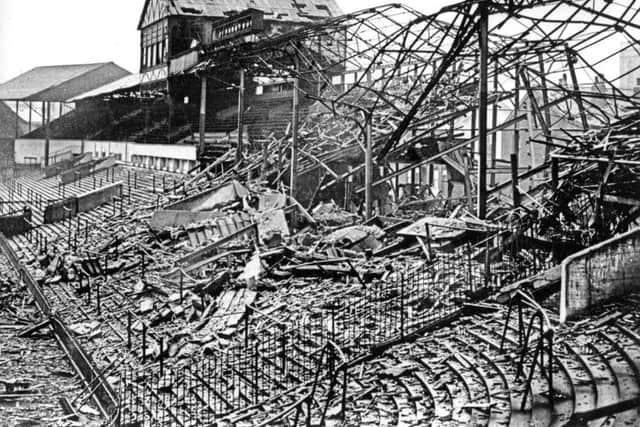Steel city blitzed in Operation Crucible


Eight gasholders were knocked out, 206 water mains fractured, 90 sewers broken, 50 substations disabled, 3,000 telephone lines damaged, 1,200 shops and business premises destroyed and 106 of the city’s schools were affected. Twenty- two buses and 31 tram cars were destroyed or seriously damaged.
In just two nights, December 12-13 and 15-16 1940, the Luftwaffe brought death and destruction on an unimaginable scale.
Advertisement
Hide AdAdvertisement
Hide AdThe Germans knew Sheffield’s steelworks played a major part in Britain’s war effort and made the city a principal target. Within the English Steel Corporation’s Vickers Works was a 15 ton drop hammer – the only one in the land capable of turning out Rolls- Royce Merlin crankshafts for the Spitfire and Hurricane aircraft. The ESC also manufactured components for tanks, side and deck armour for warships, bomb castings and forgings for 17 pounder anti-tanks guns.


On the afternoon of December 12, intelligence HQ detected signs of a raid similar to ones that had occurred in Coventry, Southampton, Birmingham and Bristol only weeks earlier.
They discovered X-Gerät (X-Apparatus) radio beams were being laid across northern England in preparation for enemy bombers to be guided to their target. The German code name for the mission was Crucible. The raid was carried out by three main groups of aircraft flying from aerodromes in northern France.
At 6.15pm a yellow alert came, followed by a purple one half-an-hour later, and a red alert at 7pm. Sadly, Sheffield was not ready when the first enemy aircraft, a Heinkel, appeared. It was a pathfinder, dropping parachute flares to pinpoint targets. The first wave of bombers continued with incendiaries on the outskirts and in the centre.
Advertisement
Hide AdAdvertisement
Hide AdAmazingly, cinemas and pubs were still full and people were dancing at the City Hall and Cutlers’ Hall, until the police and air raid teams instructed everyone to take shelter.


The first raid involved about 280 enemy aircraft including Junkers 88s, Heinkel 111s and Dornier 17s. The main bombing period was one hour either side of midnight, with numerous areas being badly hit, including Gleadless, Moorhead, Park Hill, Sharrow, Walkley, Burngreave. The Luftwaffe dropped about 355 tonnes of high explosives and about 16,000 incendiary canisters.
Every building in Angel Street was destroyed and King Street was badly hit. The Moor was described as a tunnel of fire during the raid. Familiar buildings were hit including Sheffield United’s Bramall Lane Ground, the Central Hebrew Synagogue, St Mark’s Church and St Vincent’s Roman Catholic Church.
On the Fitzalan Square/High Street corner, the seven-storey Marples hotel took a direct hit at 11.44pm on Thursday, December 12 from a bomb that detonated just above the cellars, where people were taking refuge, killing about 70 and reducing the building to a 15-foot-high pile of rubble.
Advertisement
Hide AdAdvertisement
Hide AdShortly before the explosion, customers and staff had been singing. The next day, seven men were dug out still alive, as a small section of cellar roof had, amazingly, withstood the impact. It was the worst single tragedy of that terrible night.


One consolation was that a blanket of fog and smog across the city’s eastern industrial side meant it did not suffer any great damage. Whether German navigators confused The Moor with Attercliffe Road and this was reason for the city being badly hit instead of the industrial area has been the subject of some speculation. The all-clear was given a little after 4am.
Three nights later, on Sunday at 7.10pm, about 100 bombers including Heinkel 111s and Dornier 17s returned in six waves and this time found the industrial heartland, with hits on Hadfield’s, the English Steel Corporation and Steel, Peech & Tozer.
Thankfully, there was no significant interruption to the war effort.
Advertisement
Hide AdAdvertisement
Hide AdYet, across the city, parachute mines, thousands of incendiaries and around 100 high explosives fell on residential areas. The bombing lasted just over three hours.
One hundred and thirty four victims of the Blitz were buried in a mass grave at the City Road cemetery, where there is a memorial garden.
In the aftermath, King George VI and Queen Elizabeth visited Sheffield and walked amongst the survivors, giving a much- needed morale boost. Winston Churchill arrived a little later, delivering a rousing speech.
Sheffield Blitz In Words and Pictures (2000) reveals there were countless heroes on Sheffield’s streets. No fewer than six George Medals were handed out for Blitz bravery.